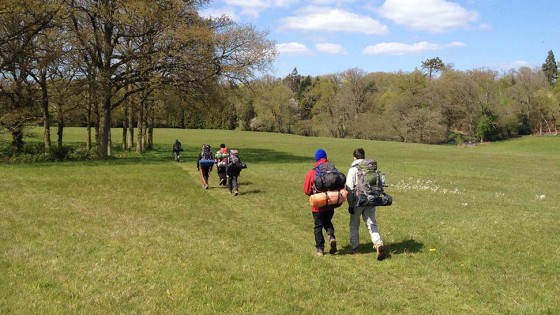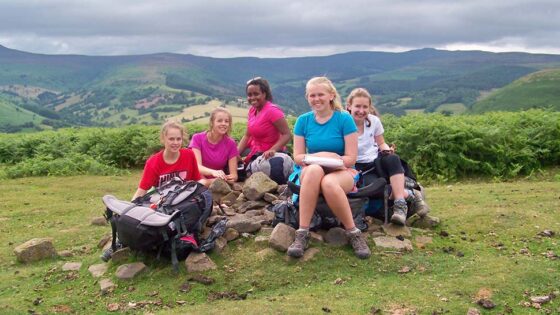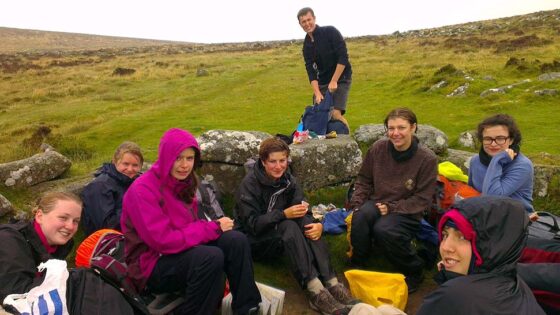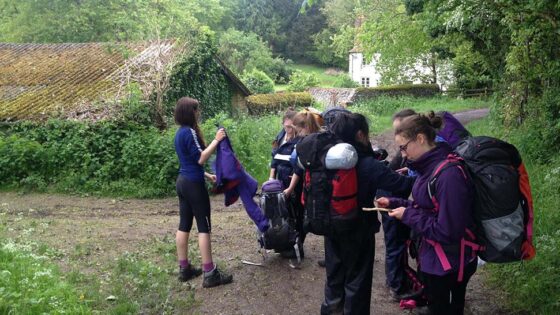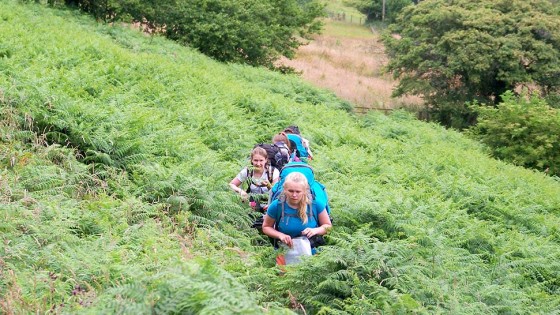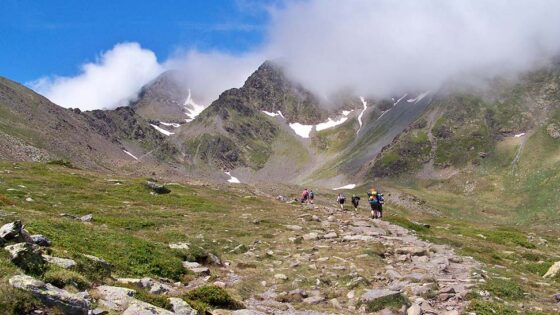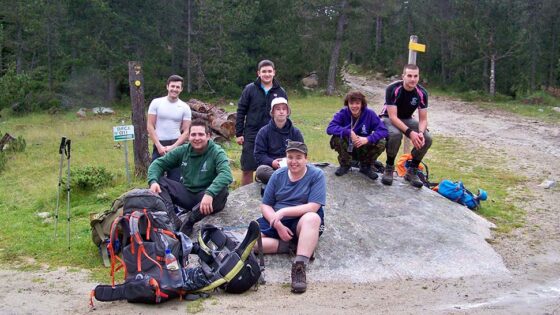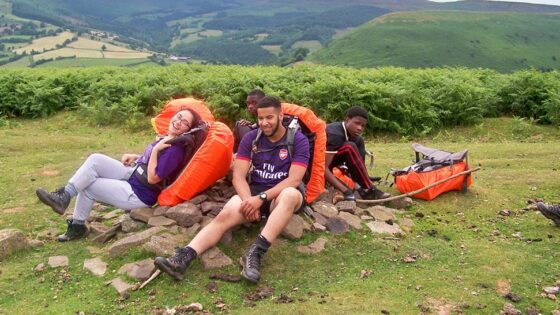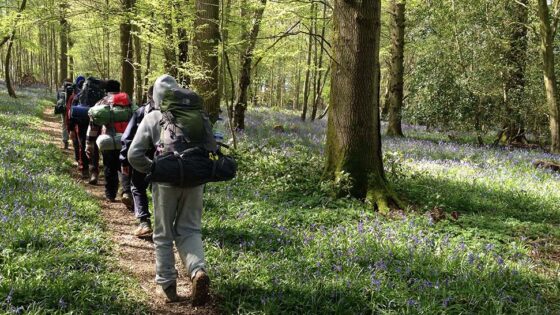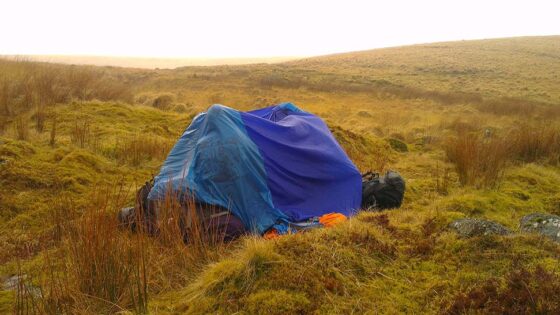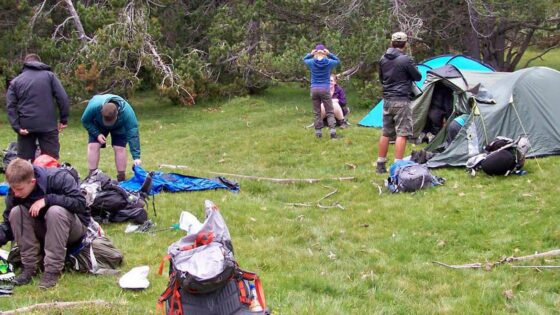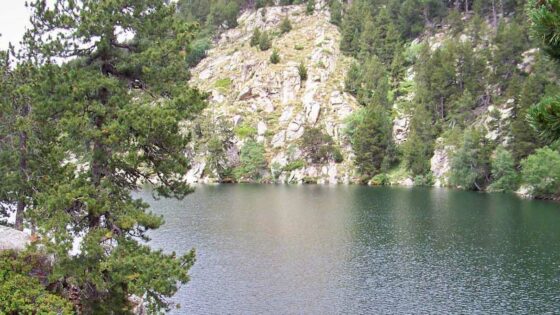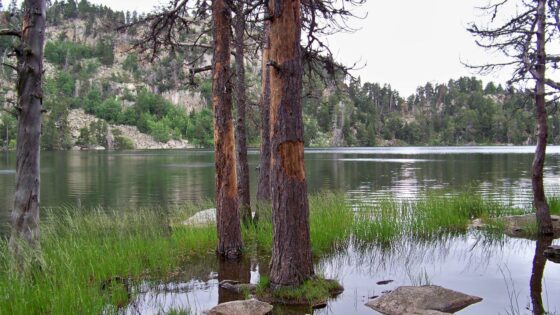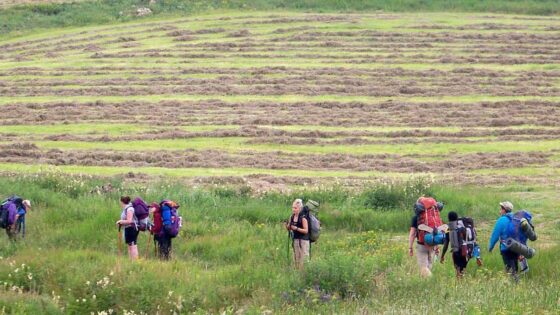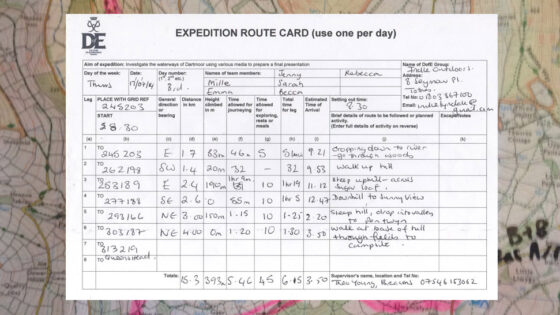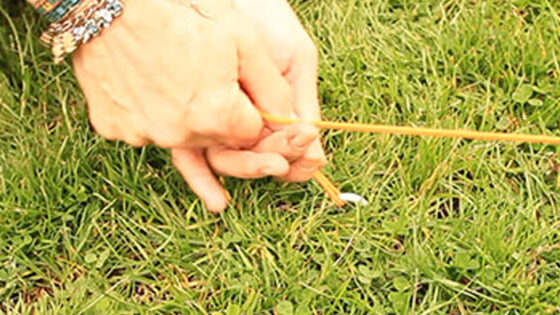Choosing the right amount and right kind of food will make a huge difference to how successful and enjoyable your DofE expedition will be.
Personal preference
Choosing foods you like makes all the difference on your expedition because it will really improve your mood if you eat something you like and make you depressed and ready to give up if you are trying to eat something you hate. However many people, especially at bronze, choose things just because they like them without considering the things below and end up with something that’s really heavy, goes bad, doesn’t fill them up or that won’t cook properly.
Calories
You need to be aiming to eat at least 2,000 calories per day if not 3,000. This is a lot of food however and I haven’t seen many DofE participants eat 3,000 calories a day. On packaging calories are written as kcal / 100g which means how many thousands of calories there are per 100g. However in normal everyday life when we say 1 calorie we mean 1,000 calories or 1kcal.
Balance of food groups
The food groups are fat, protein, carbohydrate (including sugar) and (technically speaking) alcohol. Obviously we only need to bring the first three with us on our expedition.
Fat has the highest energy/calorie value per 100g of any food type but you can’t survive purely on fat and it doesn’t taste that great on its own (would you eat just butter?). Includes cheese, nuts and meat.
Proteins have a similar number of calories per 100g to carbohydrates but half as many as fat. Some people seem to need more protein than others: if an egg or piece of cheese fills you up more than a bowl of cereal then you are probably one of these people and should take more protein with you.
Carbohydrates are normally the main body of any meal. They give the fastest energy release. Includes rice, pasta, potatoes and bread.
Menu planning
Here are our suggestions for good things to include in your meals. Then I have included a list of things to avoid because they can cause specific problems when camping.
Breakfast
Porridge oats
Suggestion – Must be instant, not whole oats. Mix 50g oats, 50g powdered milk and 15g sugar in a small sandwich or freezer bag. Add 350ml water and cook whilst stirring until everything goes thick. You could also use an preprepard sachet of instant oats like Oat So Simple but these do not contain powdered milk.
Cereal
Suggestion – Choose the highest calorie per 100g cereal you can find (as long as you like it). Most cereals are around 340 – 380 calories per 100g but Crunchy Nut Cornflakes are over 400 and crunchy muesli type cereals (anything with ‘cluster’s in the name) are around 480 calories per 100g! Mix 50g cereal and 50g powdered milk in a sealable bag. To eat empty into a bowl and then pour cold water over and stir.
Beans
Suggestion – Not very high in calories and the tins weigh quite a bit but if a hot plate of beans makes you feel better in the morning then give it a go. You can get half size cans as well and ones with sausages in have a higher calorie content.
Cereal bars
Suggestion – Not very satisfying but some people like to get away early in the morning without doing any cooking or washing up so cereal bars might do at a pinch. Get the highest calores per 100g.
Soup
Suggestion – Instant soup sachets with pitta bread to dunk.
Hot chocolate
Suggestion – Not on its own but with some food as well hot chocolate can add some extra calories and warm you up nicely on a cold morning.
Frankfurters
Suggestion – Sausages which are smoked or cooked or dried already and which have not been taken out of their packets should be fine but if they are supposed to be kept in a fridge eat them the first day.
Hard boiled eggs
Suggestion – If you make yourself some hard boiled eggs before leaving home they should be ok for at least 24hrs but don’t keep them too hot for too long and try not to get them squashed…
Lunch
My personal approach to lunch is the deconstructed sandwhich idea: instead of making a sandwhich bring the ingredients you would like to have in a sandwhich with you separately so they don’t get squished and go soggy. Then eat them at the same time. You will also want to swap the bread for something that lasts longer (see bready things below). You could always bring some individual sachets of mayonnaise, ketchup etc to make things more interesting.
Carbohydrates
Bready things: pitta bread, oat cakes, naan bread, fajitas, wraps
Suggestion – Can be warmed up on top of a pan lid whilst you cook something else underneath and can’t get squashed as they already flat (actually oat cakes will get a bit squashed but thats ok)
Rice, pasta, mash, noodles
Suggestion – If you want a hot lunch treat read the dinner section below for suggestions
Proteins
Meat
Suggestion – Dried meats like pepperami, chorizo, beek jerky etc are all great sources of protein and fat. Anything out of the fridge section of the supermarket is a bad idea as it could go bad and give you food poisoning. The only exception might be frankfurters if you eat them soon on your expedition as they are salty and pasteurised to kill any bacteria. Once open they are not safe however so eat them all!
Fish
Suggestion – Tins of sardines, mackerel, tuna in sauce, oil or brine. Yummy and nutritious and can be eaten straight out of the tin saving on washing up.
Cheese
Suggestion – Most cheese will go sweaty and gross in your rucksack. Stick to things which are individually wrapped like babybel, dairy lea or cheese in a tube (are you sure you want to go there?). Presliced cheese is also great (Mexicana, Applewood smoked etc) but sooner or later the slices will stick to each other and become hard to separate so either separate them better in advance or enjoy them as they are all glued together.
Dinner, supper, tea, whatever you want to call it…
Again choose a carbohydrate and a protein and go for the highest calories and the shortest cooking times.
Carbohydrates
Instant mash potato
Suggestion – One of my favourite camping foods. Incredibly easy to cook, hardly uses any water so takes seconds to boil enough and is warm and filling.
Rice
Suggestion – Never bring normal rice as everything takes twice as long to cook on a camping stove as on a stove at home and rice already takes 20mins so thats 40mins…. nightmare. 10min boil in the bag rice is OK but the best kind is the pre-cooked type in a sachet such as Tilda Steamed Rice or Uncle Ben’s Express. Also see instant risotto in the dinner section below.
Pasta and noodles
Suggestion – Just like rice never bring any kind of pasta which takes 10 or more minutes to cook normally. Only use quick cook types or instant meal types (like Pasta n’Sauce). Noodles tend to be faster than pasta and some pre-cooked types are virtually instant- you just stir them around in a little boiling water to heat them and eat.
Risotto
Suggestion – My other favourite carb along with instant mash. Get sachets of risotto which are already cooked with various flavours in like Uncle Ben’s Risotto. You can even boil the sachet in water without opening it then eat it out of the sachet when hot. Just pour two or three dessert spoons of boiling water into the sachet after opening and give it a stir. No washing up! Yeah!
Couscous
Easy peasy to make- get the precooked one, it should say something like: ‘leave for 3mins’ not: ‘leave for 10mins’. Measure how much couscous you are going to use (50g per person) and add the same volume of boiling water. About half a mug of each per person. Then just wait a few minutes.
Proteins
Tuna sachets
Suggestion – You can now get cooked tuna steaks in sauce or oil in a plastic sachet. You can heat them up by boiling the unopened sachet in water. 116 kcal/100g
Beanfeast
Suggestion – A vegetarian dried chili con carne like stuff which you add water to and heat up. 315 kcal/100g
Salami
Suggestion – Dried sausage like salami or chorizo can be sliced and thrown into past, risotto or eaten on its own. It has a very high protein and calorie content. 407 kcal/100g.
Smoked Sausage
Suggestion – Mattesons’ Smoked Pork Sausage is salty enough and has been smoked enough to preserve it and so as long as you don’t open the packet it will keep in your bag for the duration of your expedition. 310kcal/100g
Cheese
Suggestion – Some cheeses will go slimy in your bag, especially on a hot day. There are a few which will be fine- camembert, brie, babybel and feta. Camembert and brie will go very soft and runny but that’s how you’re supposed to eat them anyway… About 290-320 kcal/100g. Pre-sliced cheeses are great too but open the pack and separate the slices out otherwise they will stick together.
Sauces
Suggestion – You can either get a sauce which does not contain meat/protein such as tomato pasta sauce or a “complete sauce” such as Dolmio Express bolognaise or carbonara which contain beef mince or ham respectively and come in sachets. Buy sauces in sachets instead of glass jars and try to get ones in single serving sizes so you don’t have to reseal the packet. Most sauces are under 100 kcal/100g but satay sauce is nearly 200 kcal/100g because it contains peanuts and black bean sauce 136 kcal/100g.
Snacks
Snacks are very important if you want to increase your calorie count from around 1,500 to over 2,000. Snacks tend to have very high calories per 100g. Conversely this is why you should avoid snacks if you are on a diet! Remember you are not on a diet when on your DofE, even if you do want to lose weight, don’t try to do so on your expedition!
Nuts and trail mix
Suggestion – Nuts are very high in fat and therefore very high in calories. You can mix them with dried fruits to make ‘trail mix’. You can put whatever you want in your trail mix and put it in a resealable plastic bag. You can have it in your pocket ready for your hand to dip in whenever you feel a drop in energy.
Super Trail Mix
Suggestion – When people do a serious expedition to the South Pole or something they do not eat breakfast or lunch and instead just make a big bag or special trail mix which they keep eating all day. It contains broken up pieces of high calorie chocolate bars, flapjacks, chunks of cheese, salami and nuts. You could try making your own one or if the idea of eating salami and chocolate at the same time puts you off try making a savoury and sweet one separately.
Chocolate
Suggestion – Although on hot days chocolate might melt a little its got masses of calories in a small compact size, doesn’t go off and almost everyone likes it. The highest calorie bars are Kit Kat Chunky, Mars Bar, Snickers, Cadbury’s Dairy Milk. Basically anything ‘chunky’.
Sweets
Suggestion – Traditional hard boiled sweets are great as they contain plenty of calories and you can suck them as you walk. Starburst etc are also good ideas. Take ’em if you like ’em.
Peanuts
Suggestion – Either in your trail mix or on their own peanuts contain loads of calories and don’t go off. Check that no-one in your team has a peanut allergy though as its one of the worst allergies!
Pepperami
Suggestion – Yum yum. Don’t get anything sausage like which is supposed to be kept in the fridge though.
Drinks
Generally speaking you will run out of any drink you are carrying at the end of the first day and need to refill. As you can’t buy anything on your expedition its going to be water you’re drinking. If you do take any drinks for your first day don’t bring anything with caffeine in as it is a diuretic (makes you wee) and so you will become dehydrated.
The only other drink worth bringing is hot chocolate. It weighs hardly anything and gives you a sugar and calorie boost and makes you feel better either in the evening before bed or in the morning to wake you up. Get the single serving hot chocolate sachets. Make sure its not Cadbury’s Options or Highlights as these are low-fat and low calorie versions. Yuck.
The Bad List
A list of foods which are not very suitable to take on a DofE Exped.
Bacon
Personally I don’t recommend bacon as it causes a mess of your cooking pan, you won’t have oil to fry it in so it will stick and you have to use it all in one go or it will go rancid. Some people just ignore all my advice though..
Sausages
Fresh ones are a no-no as they will go off and you could get nasty food poisoning.
Eggs
You could take raw eggs in a tupperware dish and then try to fry them but where would you get the oil from?
Mushrooms, tomatoes etc
Fresh stuff will not last, could get squashed and contains no where near enough calories to get you going. Tinned things weigh too much and don’t contain enough calories to make up for this.
Fresh fruit
Fine for your first day but don’t bring more than you need for day one or it will get bruised and go nasty in your rucksack.
Crisps
Although they are high in calories they are bulky due to needing to have air added to the package to stop them getting crushed so they take up way too much room in your rucksack. A bag of Walker’s crisps has the same calories per 100g as a chocolate bar but takes up twice as much room at least and contains fewer grams.
Pot noodle
Very bulky as the packaging contains lots of space inside for the water. Not very high in calories or indeed much of anything else either…
